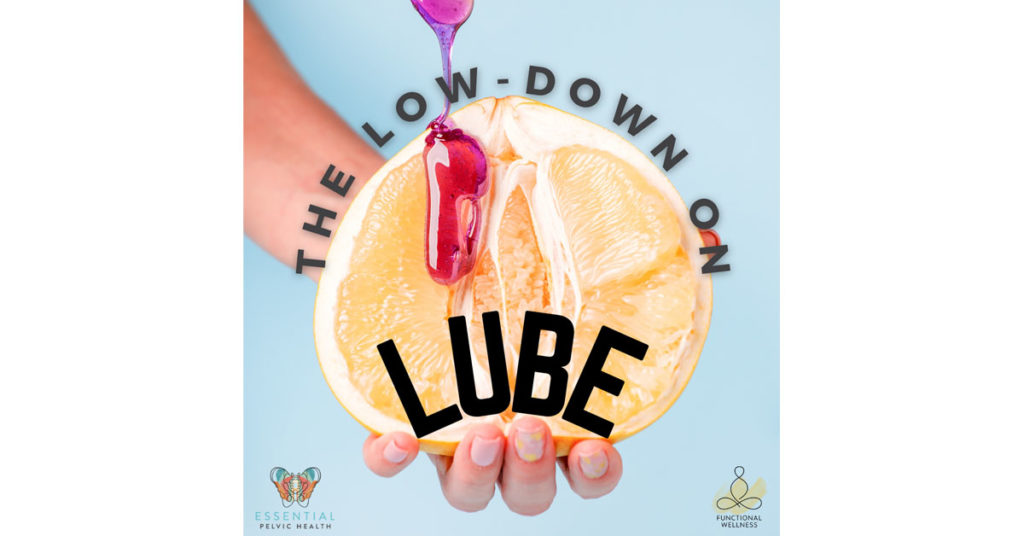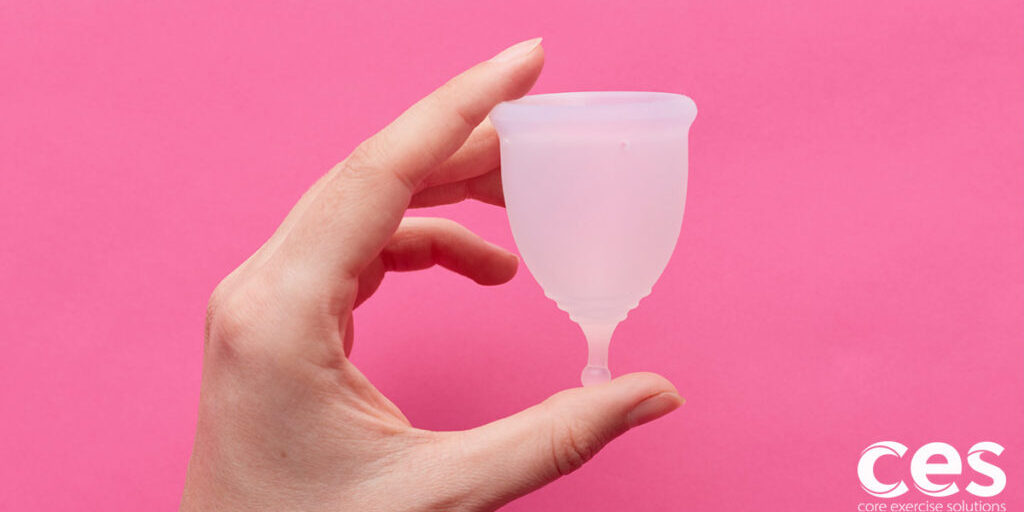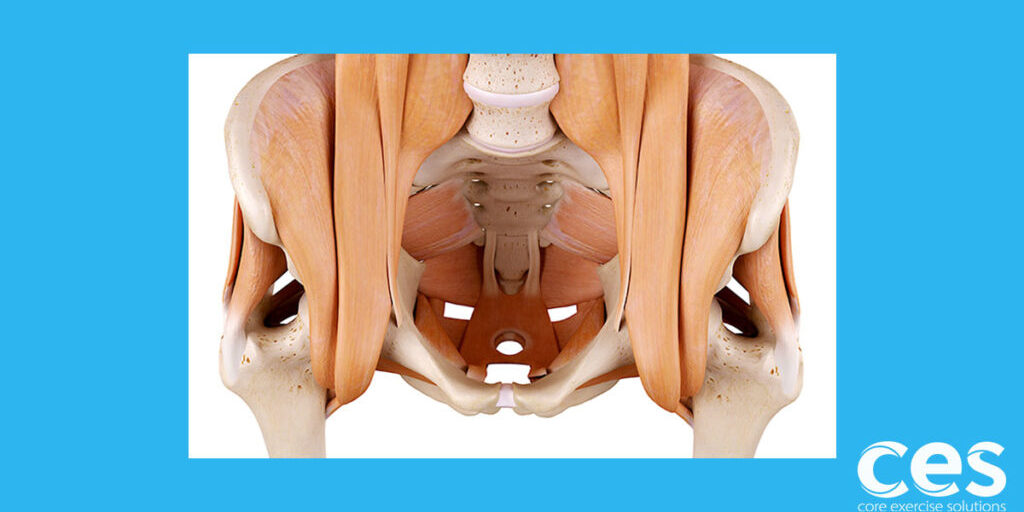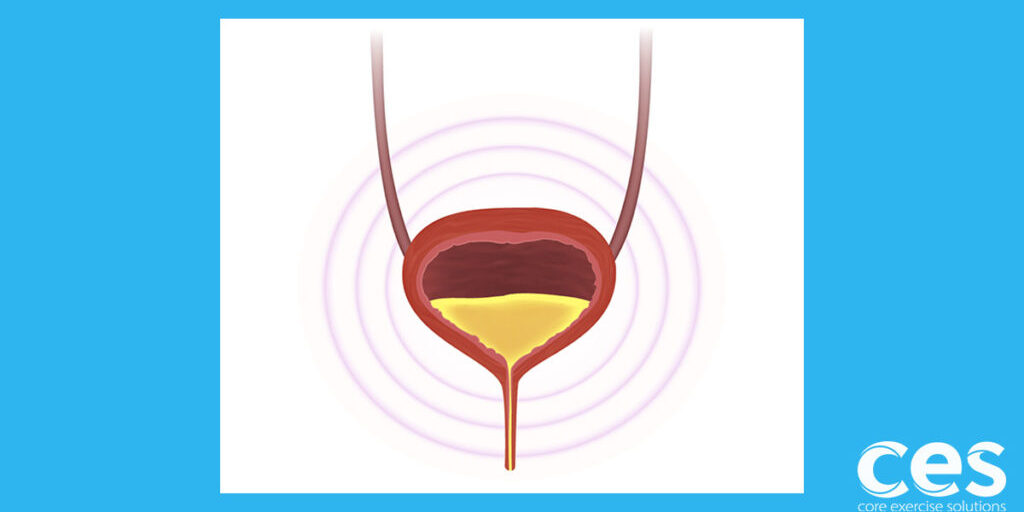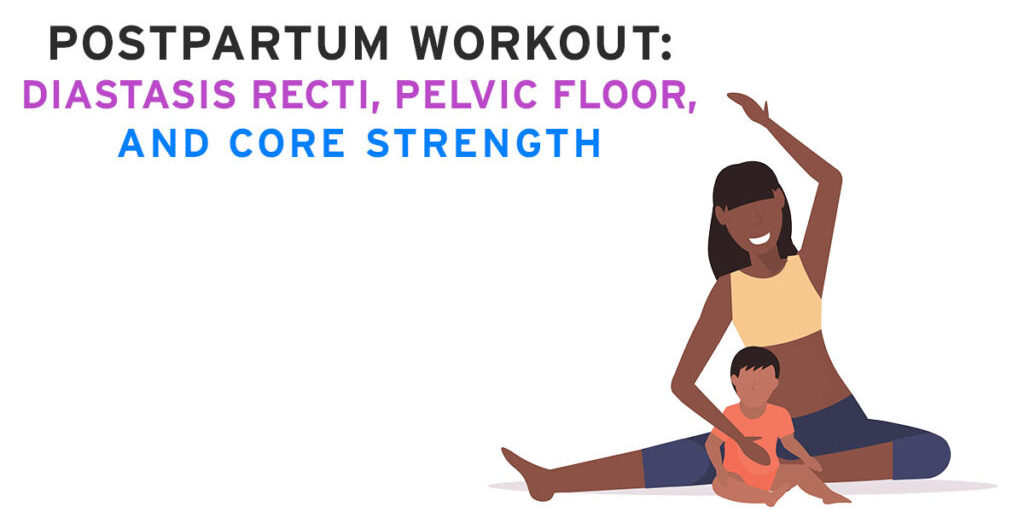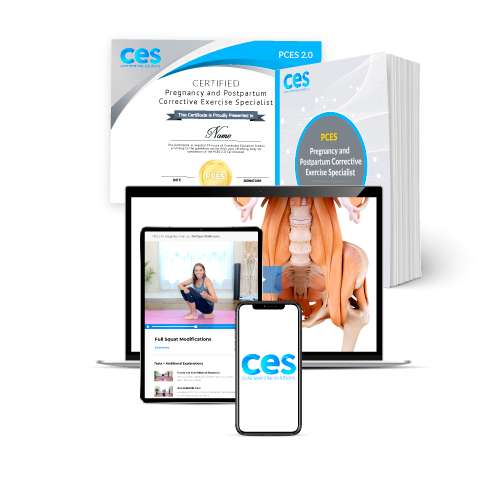There’s a growing awareness and interest in healthy ‘clean’ ingredients in the food industry as well as skin and beauty products. We are learning that what we put on our body, store our food in, and ingest can impact our well-being.
What goes inside the body and on the skin matters, personal lubricant included!
Different chemicals that are often found in personal lubricant can impact our pelvic and sexual health. The average buyer purchases what is most effectively marketed to them rather than making selections based on the ingredient list. It is reported that 65.5% of women and 70% of men use commercial lubricants. That’s a huge market of blind consumers! We are here to give you the low down on personal lubricant to make healthy informed decisions -- including what on earth is the difference between lubrication and vaginal moisturizers?
Vaginal lubricant, glides, lube, feminine moisturizer (which are not vaginal moisturizers) are all words to brand and market the same type of product -- personal lubricant. Lubricant is a liquid substance designed to offset vaginal dryness in order to decrease pain or discomfort during sex. Stress, dehydration, various medical conditions, side effects of medications, hormonal changes such as menopause or while breastfeeding, or simply timing (a lack of foreplay) are all reasons why vaginal dryness may occur.
The vagina is made up of mucous membrane, a similar composition to your skin. Just like moisturizers, oils, sunscreen, and makeup absorb into the skin, what goes in the vagina and on the vulva can get absorbed as well. The vagina’s absorption rate can be impacted by habits and lifestyle routines such as hydration levels and stress hormones, but also biological changes including where someone is in their menstruation cycle. This type of variability reinforces the importance of informed decision-making when it comes to lubricant and also that it’s anything but a one-size-fits-all product.
Types of Lubricants
There are 4 general types of lube you can purchase that are identified by their base ingredient.
- Feels most like the body’s natural lubrication
- Dries out the quickest (we are made of mostly water, therefore we absorb water)
- Can leave a tacky feeling
- Ok to use with condoms
- Versatile usage
- Generally has the longest list of ingredients
- Only plant-based oils such as coconut oil are recommended
- 100% organic
- Takes longer to clear out of the body
- Not compatible with latex condoms/barriers
- Not recommended for those prone to yeast infections
- Contraindicated with latex, even if not used together
- Hydrates and improves elasticity of sensitive tissue
- Has antifungal properties
Consider cleanliness due to cross contamination -- caution not to mix cooking oil with pleasure oil 🙂
- Hypoallergenic -- lowest number of ingredients, does not get absorbed into the mucosa membrane of the vaginal lining
- Lasts longer than water-based
- Thinner consistency
- More cleanup for removal from skin
- May stain sheets
- Cannot be used with silicone toys (breaks down the material)
- Good option for someone using a plastic dilator
- Great for someone with water-based sensitivities, or if water-based lube does not provide enough coverage
- Usually a mixture of water-based with silicone, aloe, or another type
- Lasts longer than pure water-based
- Less information available
- Often has the appearance of a lotion
- Water-silicone hybrids last longer than water-based, but don’t harm silicone toys
- Aloe-based can be less sticky but can interfere with latex, so it’s important to check compatibility with the individual product

pH & Osmolality
Lubricants are generally effective for their intended use. However, the direct exposure to the vaginal lining has recently led many researchers to raise yellow flags for some of the potential short and longer-term effects to the vaginal tissue. It’s worth taking a closer look at concerns regarding pH and osmolality of common products on the market.
- pH refers to how acidic or alkaline a substance is on a scale from 0-14. pH of 0 is most acidic, 14 is most basic, 7 is neutral.
- Osmolality refers to a substance’s ability to draw moisture out of tissues and cells.
When choosing a water-based lube, you should aim to match the area where you’re using it to avoid disrupting your balance.
Normal vaginal osmolality is at 290 mOsmol/kg. Using products with the same osmolality protects vaginal skin from damage and inflammation. A lubricant with higher osmolality than normal vaginal secretions causes vaginal tissue shriveling because the moisture is pulled out of those cells. This can lead to irritation and breakdown of the mucous membrane barrier which helps to protect the vagina from infection. Many over-the-counter products for hygiene, lubrication, and spermicide do not have the same osmolality as the vaginal skin. Hyper or hypo-osmolar products can cause destruction and inflammation to the vaginal epithelium. An NIH-funded study (Wolf, 2012) analyzed the histology reports of the impact of osmolality of various lubricants on vaginal tissue and found that hyper-osmolar lubricants damage vaginal tissue in as little as a few hours.
Vaginal pH:
Vaginal acidity plays an important role in the maintenance of vaginal health by maintaining balance in the vulvovaginal microbiome. Similar to the gut, the vaginal microbiome undergoes aerobic metabolism, which works to balance healthy bacteria and yeast. It also acts as a defense to pathogen transmission and STIs. Increasing research is finding that lactobacilli, a healthy bacteria, serves as the first line of defense for bacterial vaginosis (BV) and reduces BV occurance. It produces a number of acids and bacteriocins that suppress harmful bacterial overgrowth and maintain a healthy pH. The pH of a lubricant should be compatible with the pH of a healthy vagina, which is usually in the range of 3.8-4.5. Vaginal pH higher than 4.5 indicates decreased production of lactobacilli, which then leads to an increased risk of bacterial BV and other vulvovaginal issues.
Vaginal pH changes throughout the menstrual cycle, and is closely tied to estrogen and progesterone. The pH of the vagina rises closer to 6-7 with hormonal changes during menopause and other times of life changes with decreased estrogen. This is a natural occurrence and doesn’t necessarily reflect poor health, but does leave women in this group susceptible to BV, UTI’s, yeast overgrowth, and other pathogens. Signs of an unbalanced vaginal pH can look or feel like: foul or fishy smell, itching, burning, unusual discharge.
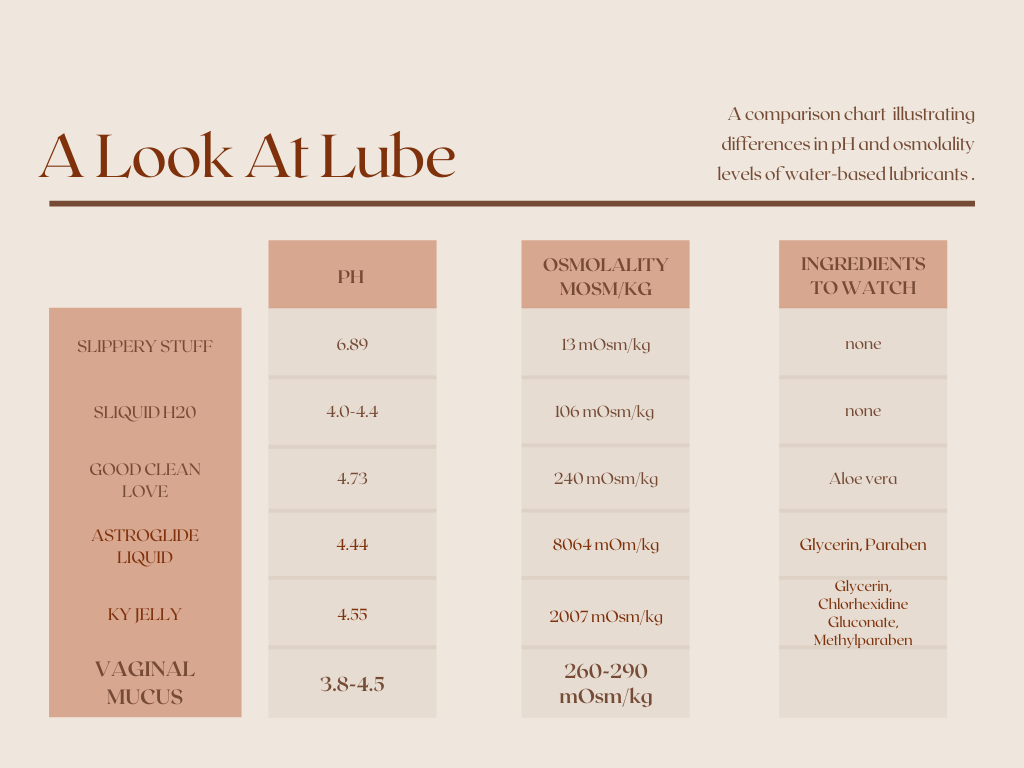
Anal pH:
Anal pH is much closer to neutral (7) on the pH scale, and remains consistent with the hormonal changes of the menstrual cycle and lifespan. Many personal lubricants have a pH of 4-5. When using a lubricant of this pH level with sores or lesions, it could cause irritation. Lubricants to be used rectally should have a pH of 5.5-7. Thick water-based, silicone-based or oil-based lubricant are extremely common for anal play.
Check the Ingredient List
In general, the shorter the ingredient list, the better off you are. We compiled a list of some of the most common chemicals and additives in commercial products to AVOID.
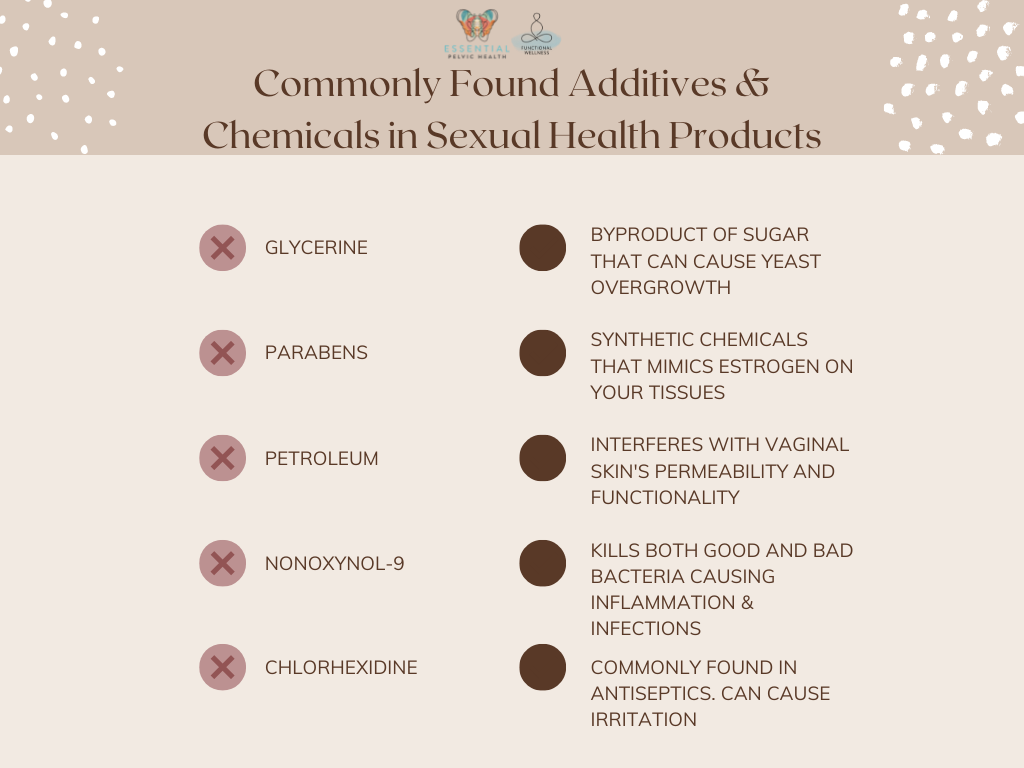

Is saliva safe to use as a lubricant?
We’re on the fence. We believe you should do what works best for you, however, there is some research that suggests it may not be ideal for everyone. First, using saliva as a lubricant can spread oral/throat STIs, so if you’re concerned about the spread of pathogens, this might not be the best option for you. Second, digestive and vaginal bacteria are different. Generally the pH of saliva is 6.7, far above the range of that in a healthy vagina. This could leave you susceptible to yeast infections or bacterial vaginosis. Third, it’s just not as good as lube -- the thin barrier ends up being not enough and can lead to pain with sex.
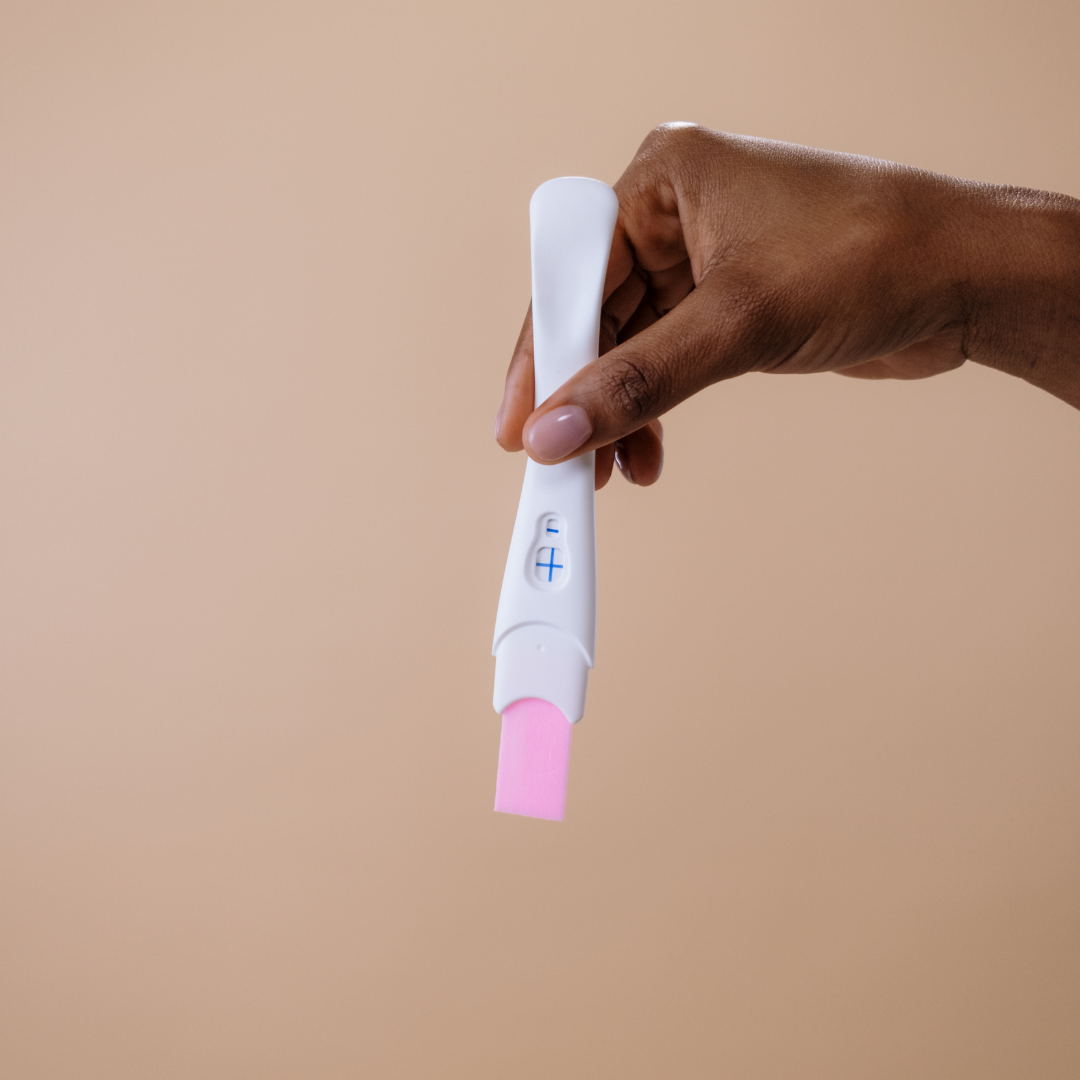
Fertility Considerations
At this point in time, there is some conflicting research on whether or not lubricants impact fertility during penetrative sex. In vitro studies that looked at sperm motility and lubricant indicate there are some lubricants on the market that do impact sperm motility -- typically lubricants with low pH and high osmolality decrease sperm motility. This article concluded that if trying to conceive, the best conditions for sperm survival and motility is pH 7.2-8.5 and osmolality 270-360 mOsm/kg. This pH matches sperm pH rather than vaginal pH, which may cause irritations and infections. Another study that looked at natural conception suggested that lubricant use did not indicate a reduction in fertility.
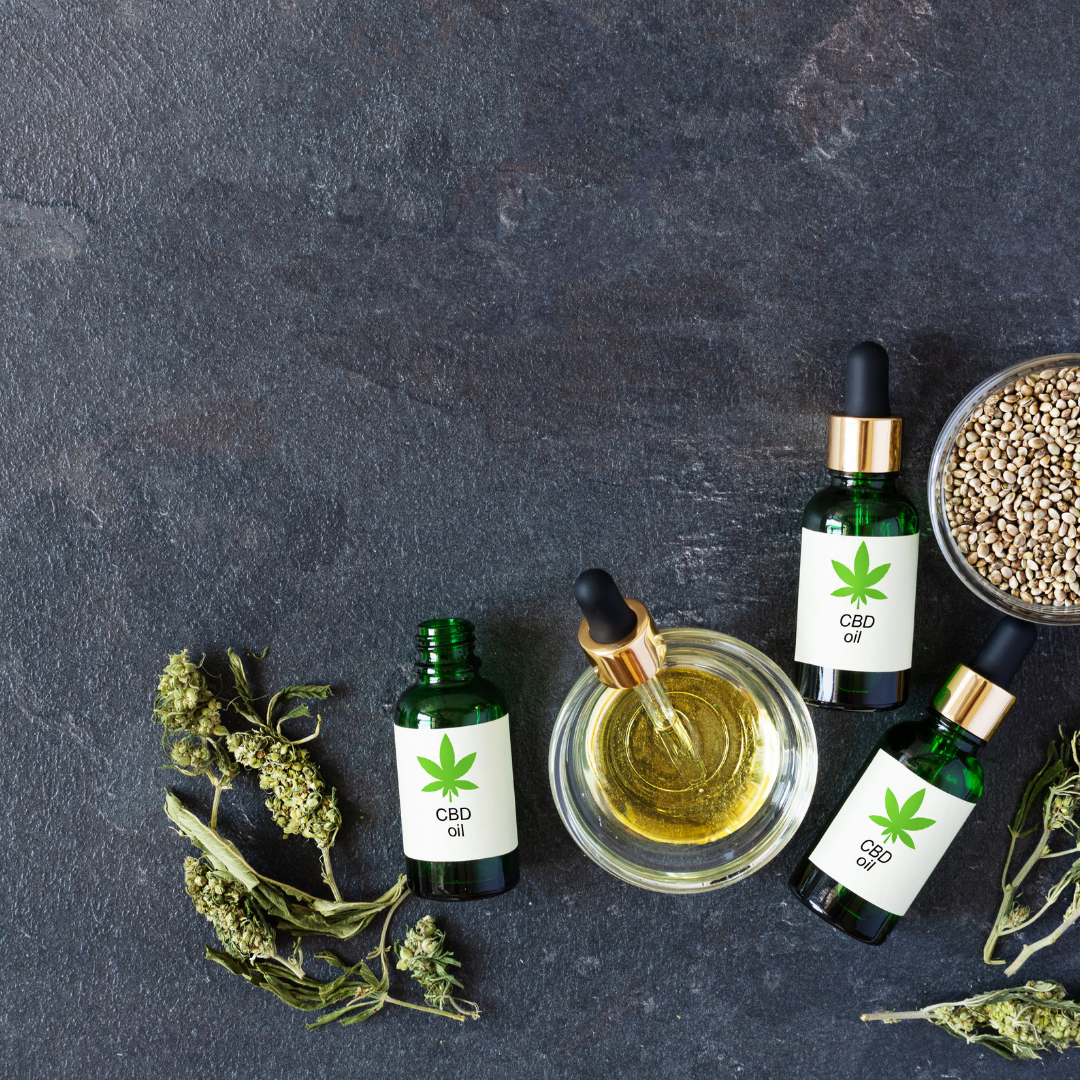
CBD and Lubricant
You’ve probably seen or heard of CBD oil in various forms of muscle rub and skin care, pain management, and healing. What you may not realize is that CBD lube is also sliding right onto the shelves along with the rest of the CBD products out there. CBD is short for cannabinoid, the non-psychoactive component found in cannabis. There is not a lot of research on CBD lubes yet -- much of what is known is more anecdotal. CBD is thought to decrease inflammation, increase blood blow, and help with relaxation. This is why it is thought to be an option for someone who experiences pain with intercourse. Possible benefits include heightened sensation, increased arousal, and higher threshold for receptivity to touch. When considering a CBD lubricant, note that because most are oil-based, they are typically not compatible with latex. Water-based CBD lubricants are a nice alternative to oil-based and have a higher absorption rate of cannabinoid properties into the tissue. It’s important to allow about 15 minutes for absorption into the skin for the product to begin to work.
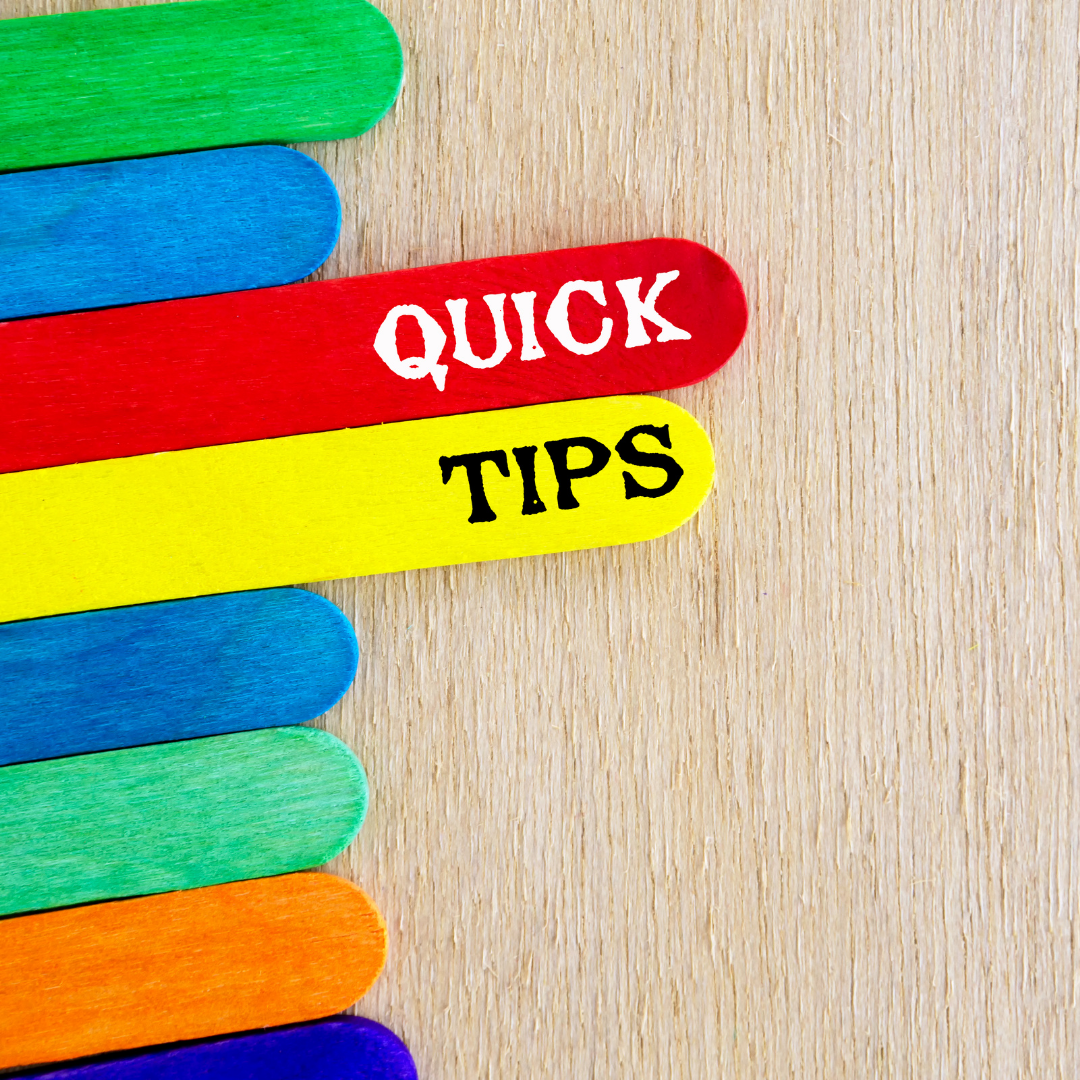
Lube Tips
Pelvic health physical therapist and sex educator, Dr. Alex Papale, provided us with some tips to get the most out of lubricant.
Top Tips for Anyone Choosing and Using Personal Lubricant
- Look at the ingredient list and make sure there are no irritating ingredients.
- Never get numbing or desensitizing lubricant.
- Using lubricant both for vaginal and anal penetration? It’s best to keep your lubricants separate to prevent cross contamination.
- Get the most out of water-based lubricant by having a spray bottle or cup nearby to add more water when the lube becomes a little dry or tacky.
- Interested in getting the most out of your CBD lubricant? Mix CBD lube with water-based lubricant to make it last longer.
For Those Looking to Level Up Their Lube Experience
Lube Shooter
Lube shooters look like a tampon applicator, and usually are smaller than a finger. This can be placed deeper inside the vagina or anus without the mess, enabling the lubricant to reach further. Dr. Alex Papale recommends this product, “Great for anal penetration or for someone who experiences significant vaginal dryness.”
Link to an example here
Double Glide
For those on testosterone, post-menopausal, or other conditions that result in low estrogen levels, doubling up on lubricant enables hydration and long-lasting effects.
Dr. Alex Papale suggests, “Start with water or aloe-based lubricant that’s hydrating for the skin, then layer a silicone lube on top of it.”
Mix and Match
You can make the perfect lube for you! There are ways to mix different types to create the lubricant that you want and need (long-lasting, hydrating, matches your body’s natural lubricant).
Example: 1 part silicone-based and 8 parts water-based will be long-lasting and less likely to stain the sheets.
Lubricant Recommendations:
The following list of recommendations is a preferred list by EPH, but it is not exhaustive. This article is intended to give you tools to research other products to fit your individual needs.
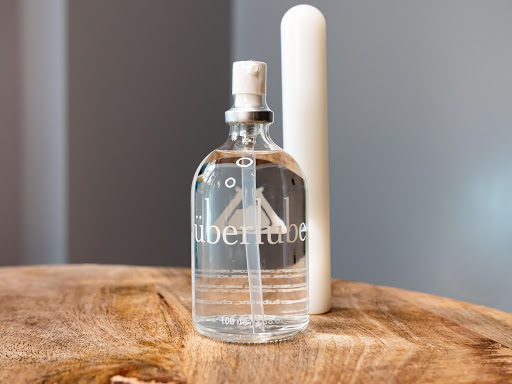
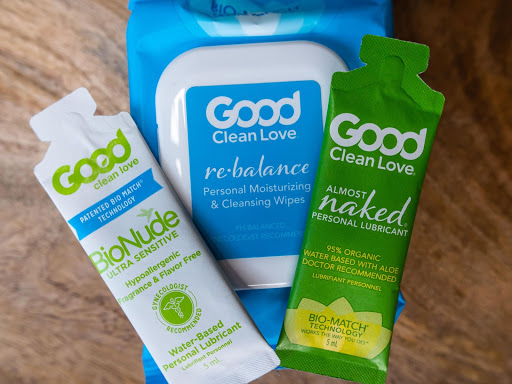
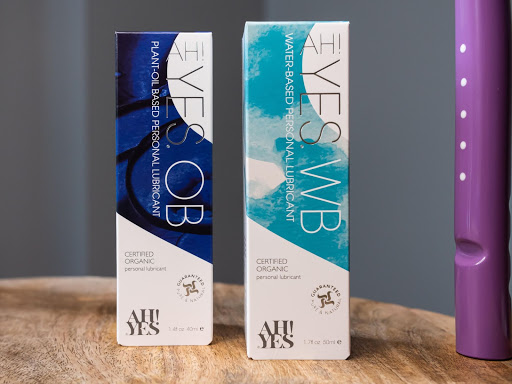
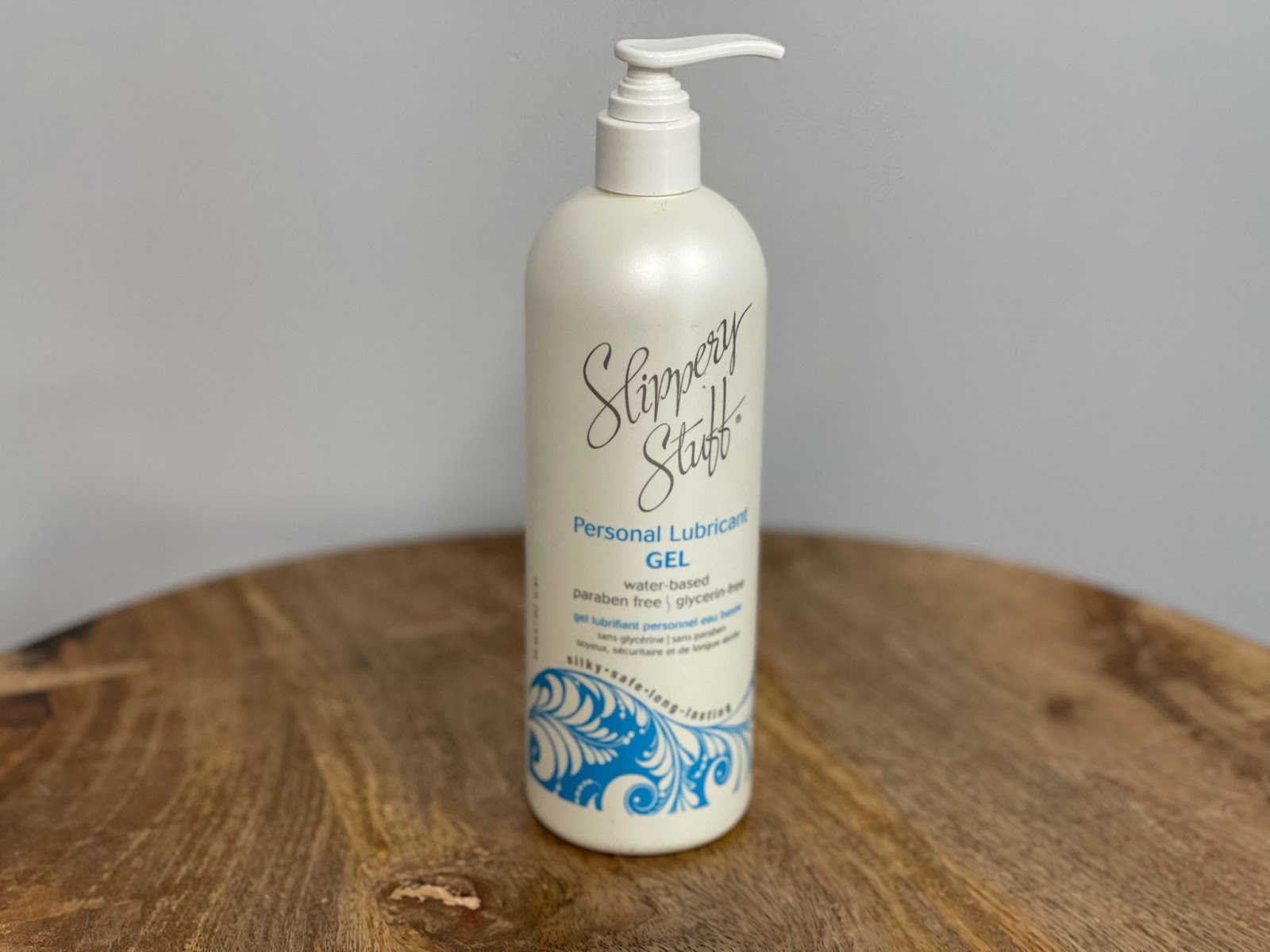
Slippery Stuff: Water-based lubricant (paraben and glycerin free). This is the preferred lubricant for many pelvic floor therapists, including at EPH!
Sliquid: Ethical lubricant company that makes a variety of lubricant options
- Sliquid H20: Water-based
- Sliquid Sassy: Thicker, water-based, marketed for anal penetration
- Sliquid Organics: Aloe and water-based hybrid that adds botanical ingredients
- Sliquid Silver: Silicone-based
Click link here for a 10% discount!
AH!YES: Certified organic lubricant line recognized by the Soil Association Organic Certification. Offers a variety of lubricants and vaginal moisturizers
- YES WB: Water-based lubricant
- YES OB: Oil-based lubricant
Uberlube: Sex educator’s favorite silicone-based lubricant according to Dr. Alex Papale
Use code: EPH10 for 10% discount!
Good Clean Love: FDA-approved company, aloe and water-based lubricant with all natural plant-based ingredients. NIH-funded study found their Bio-Match product most closely mimics natural vaginal secretions.
Click link and code: EssentialPelvic for 20% discount!
Desert Harvest: FDA-approved company with a variety of sexual wellness and skin care aloe-based products
- Aloe Glide: Aloe-based lubricant
Use code: EPH10 for 10% discount!
CBD Lubricant Recommendations:
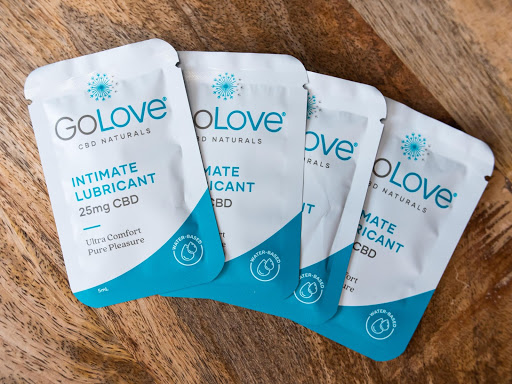
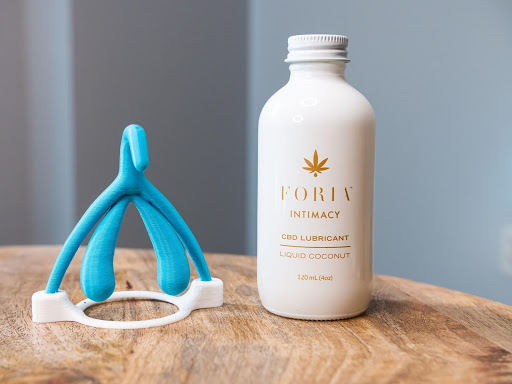
GoLove CBD: Water-based CBD lube. Hyaluronic serum, natural ingredients.
- Sex toy safe.
Click link and code: EPH10 for 10% discount!
Foria: Coconut oil-based. 100% organic certified MCT coconut oil and broad spectrum hemp extract (free of THC)
- CBD lube
- suppositories (vaginal and rectal)
- Awaken (plant-based with a little spice). Nice alternative to warming and flavored lubricants that can have less favorable ingredients and a stickiness to them.
15% off discount on any full-priced Foria product with code RELIEF15.
Vaginal moisturizer vs lubricant?
Vaginal moisturizer rehydrates dry mucosa tissue. It is absorbed into the skin and vaginal lining, mimicking vaginal secretions. A vaginal moisturizer can help alleviate symptoms associated with vulvovaginal atrophy such as vaginal dryness, spotting after intercourse, pain/burning during urination, vaginal irritation/itching/burning, and frequent UTIs and/or yeast infections. It works by increasing water content to cells lining the vaginal canal and lowering the vagina’s pH. Moisturizers are not just beneficial for women to reduce discomfort during sex, but also for women who are not necessarily sexually active for day-to-day comfort. Vaginal moisturizers are made to last longer than 60 minutes and can be applied every 1-3 days to alleviate dryness. Moisturizers are considered Medical Devices by the Medicines and Healthcare Products Regulatory Agency because they last so long, which means they have been tested for safety and efficacy. (Lubricants are made for short-term use during sex.) Moisturizers may be recommended for someone who experiences low estrogen, vaginal atrophy, or pH imbalances.
There are different ways to apply them: creams, gels, suppositories. Some are external, many are inserted into the vagina with an applicator.
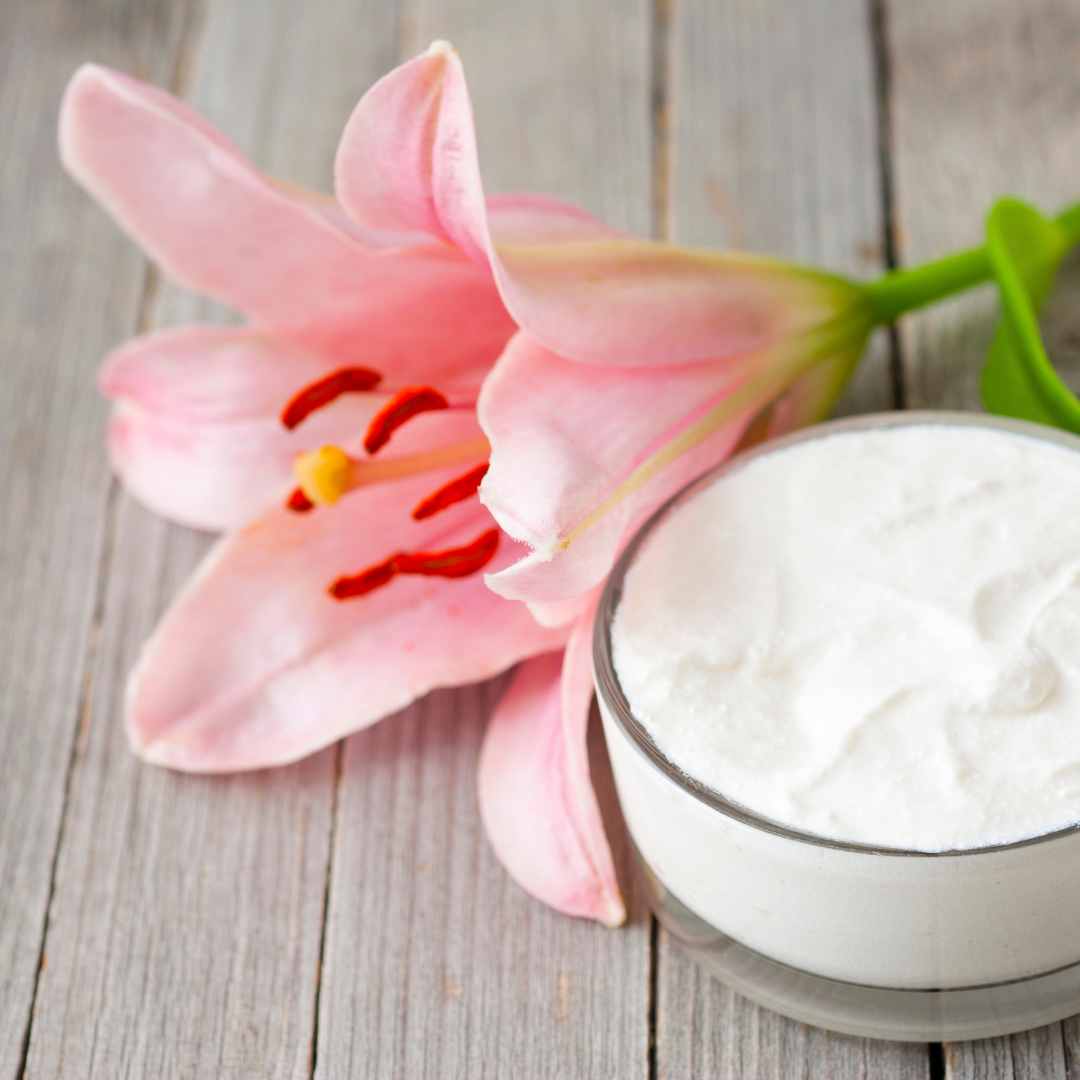
Quick note on vulva creams:
Vulva creams are external creams for your vulva. Think “face cream” for your vulva. They are not intended for internal use. Vulva creams can be beneficial for those with specific medical diagnoses followed by a medical provider. The average consumer doesn’t need a vulva cream. We recommend that you reach out to your OB/GYN or pelvic health specialist to discuss your options and if your doctor recommends it for you, here are some good brands.
Vaginal Moisturizer & Vulva Cream Recommendations
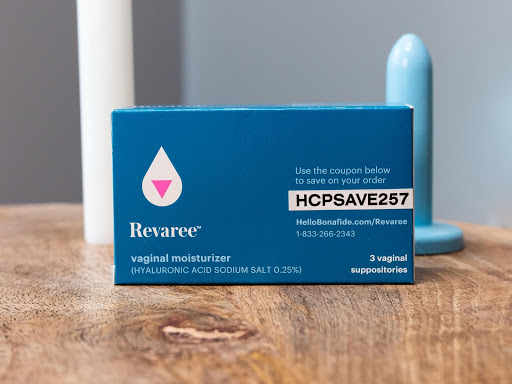
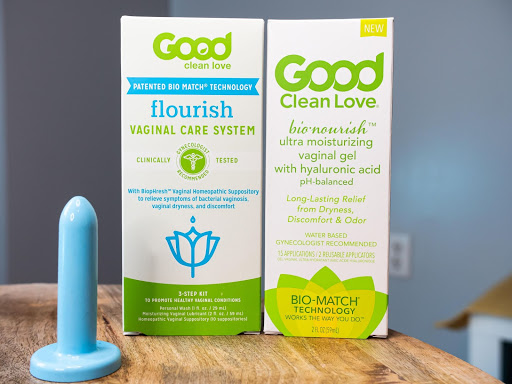
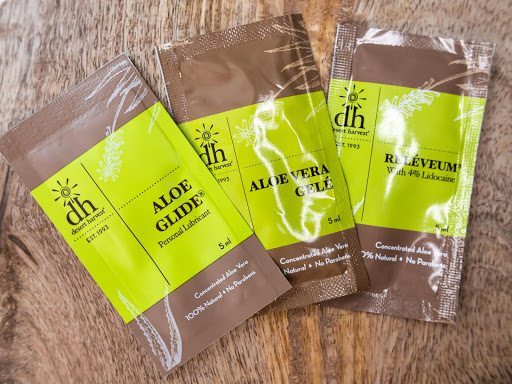
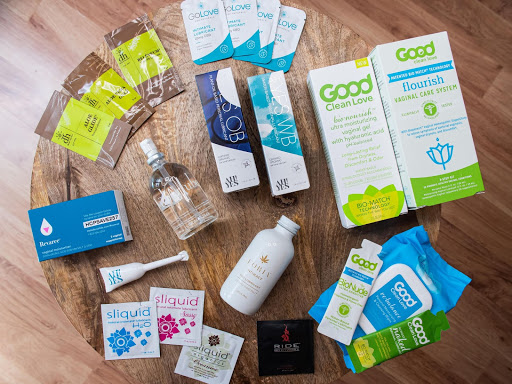
Ah Yes: Water-based gel, estrogen free
Revaree: Suppository with hyaluronic acid
Use code EPH 20 for 20% off your first month’s subscription
Good Clean Love: Restore Moisturizing Gel
Click link and use code Essential Pelvic for 20% discount
Julva: External vulva cream affiliate links
V Magic: External vulva cream
Use link to receive 25% off your subscription
Desert Harvest Releveum Cream: External skincare cream with pain and healing properties that includes 4% lidocaine (a numbing agent).
Use code EPH10 for discounts
There are a lot of options out there! Though it is great to have options to meet our individual needs, we understand that it can be overwhelming and challenging to determine the best fit for you. The intention of this article is to streamline all the available information and make it easy to digest so you can make educated and ‘exciting’ choices. Personal lubricant and moisturizer are a tool. No matter what your reasons are for using them, it’s a simple way to enhance your sex life and decrease discomfort. So go ahead, and lube up!
I often encourage my clients to consider, “If you think you have used enough lube, you could probably use a little more”. - Laura Rowan, OT/L Pelvic Rehab Specialist
This guest blog was created by two amazing women. You can find out more about them below!
Laura Rowan, OT/L is a Pelvic Health Occupational Therapist and founder of her private practice, Essential Pelvic Health, serving clients throughout New York and Massachusetts . EPH provides an integrative whole person approach to pelvic health. Treating women, men, and all gender diversities getting to the root cause of persistent pain and developing personalized lifestyle strategies for optimal bladder, bowel, and sexual function. EPH is committed to providing professional continuing education and mentorship to support the growing demands of this emerging field. https://www.
Dana Solomon, OTR/L is an pelvic floor occupational therapist and founder of the Boston-based private practice, Functional Wellness. After years of working with children under the age of three and their families, she realized there was a significant need for maternal health services, including pelvic health. Since switching specialties, Dana has had the honor of treating people across the lifespan from early adulthood to post-menopause, with a particular interest in pain conditions and peri/postnatal recovery. Manual therapies, movement, mindfulness, and meaningful functional activity is the foundation to her approach that invites her clients to know their bodies from a new point of view - with a lens of compassion, connection, and curiosity. https://www.
**Disclaimer: EPH receives monetary compensation for products bought through affiliate links which goes to support pelvic health continuing education. This article is intended for educational purposes only, and is not providing medical advice. Please seek out a medical provider and/or a pelvic floor specialist for individual medical needs
References
- Edwards, D., & Panay, N. (2015). Treating vulvovaginal atrophy/genitourinary syndrome of menopause: how important is vaginal lubricant and moisturizer composition? Climacteric, 19(2), 151–161. https://doi.org/10.3109/13697137.2015.1124259
- Fontaine, M. (2016). Slippery When Wet: Is Your Lubricant Causing Pelvic Pain, Infections, or Fertility Problems? Available at: http://pelvicpainrehab.com/female-pelvic-pain/3836/slippery-wet-lubricant-causing-pelvic-pain-infections-fertility-problems/
- Mackenzie SC, Gellatly SA (2019) Vaginal lubricants in the couple trying-to-conceive: Assessing healthcare professional recommendations and effect on in vitro sperm function. PLOS ONE 14(5): e0209950. https://doi.org/10.1371/journal.pone.0209950
- Papale, Alex. Personal interview. 05 April 2021.
- Steiner AZ, Long DL, Tanner C, Herring AH. Effect of vaginal lubricants on natural fertility. Obstet Gynecol. 2012;120(1):44-51. doi:10.1097/AOG.0b013e31825b87ae
- Strgar, W. (n.d.). Taking Care of the Vaginal Microbiome [Pamphlet].
- Vestal L. Guide to Lubricants and Moisturizers.
- Wolf LK. Studies Raise Questions About Safety Of Personal Lubricants. C&EN 90(50):46-47. 10 December 2012.
Related Articles
- « Previous
- 1
- …
- 3
- 4
- 5
Pelvic Floor and Diastasis: What You Need to Know About Pressure Management

Join us today for this 6-part Pelvic Floor and Diastasis Video Series, absolutely free.
This course is designed for health/wellness professionals, but we encourage anyone interested in learning more about the pelvic floor and diastasis to sign up.
We don't spam or give your information to any third parties. View our Terms of Use and Privacy Policy.
Free Pelvic Floor Educational Series
Dr. Sarah Duvall, PT, DPT, CPT and the CES Team have helped thousands of women create the strength and stability needed to overcome common and not-so-common pelvic floor issues.
Join us today for this 4-part Pelvic Floor Video Series, absolutely free.
We don't spam or give your information to any third parties. View our Terms of Use and Privacy Policy.
Having trouble signing up? Click here


